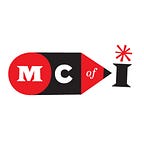Ed Dingli — Interview
Ed Dingli is a particularly favourite illustrator and ex-student of mine. Ed started out as a graphic designer and slowly ventured into illustration. I’m always saying what a great advantage it is to have graphic design skills as an illustrator. People are aware how difficult it is to learn how to draw, so they tend to want to put in the hours. I’m not sure many know how difficult graphic design is to learn, so sometimes those who can draw, don’t always make enough effort to strengthen these skills.
All this aside, mainly I wanted to talk to Ed about the subject of his work. I would say Ed is an activist illustrator, so he uses his illustration to send a positive message, and to support causes. One could say this is a type of visual journalism, or visual commentary.
What kind of illustration do you do? Do you feel your work fits under the term ‘illustration as commentary’?
I would say that ‘illustration as commentary’ is an appropriate term actually…I usually find it quite hard to define the purpose of my work as it is quite diverse. I fluctuate between creating politically driven work; usually in response to something I’ve seen that’s upset me; or in wanting to show empathy or support to human or earthly injustices. But sometimes that work gets heavy and so spending time in nature rejuvenates and in turn inspires me in many different beautiful ways, so I try to bring that into my work too.
And then there’s also a drive to create less serious, children’s-book-style illustrations that combat political heaviness with the whimsical and naive spirit of the child.
What current themes are you exploring in your illustration?
I’m currently obsessing with human-like forms found in natural rocks and landscapes, inspired by jagged coastal edges and our sense of belonging to a place — this is what’s currently occupying my sketchbook. As I still feel like I’m in the beginning of my artistic journey and still very much finding my voice, I’m always looking back on my work with a critical eye…refining and redefining, experimenting with different subjects, processes and media.
I’ve been feeling the need to use the computer less and work with my hands more, so I’ve been drifting towards painting, sculpting and printmaking, and I’m keen to bring more craft processes into my daily life, such as music, woodworking and carving. Even though I feel like an absolute beginner in all those mediums, they force me to approach expression in ways I’m not used to, which is a healthy creative process and informs the way I approach illustration too.
I’m planning on taking a planned short hiatus from commissioned work to focus on a solo artistic project using different media as avenues for exploration.
When we printed the first Illustration Annual, I noticed many illustrators working with nostalgic themes when portraying Malta. This is particularly evident when you look at architectural illustration. Do you agree? Why is this happening in your opinion?
I would imagine that it’s due to a melancholy for a waning Mediterranean island that’s taking a significant beating to its aesthetic and cultural heritage. As we’re all aware, a lot of our natural and built environment is threatened by the focus on endless economic growth, unsustainable consumerism and overly-homogenised synthetic development. So perhaps the nostalgic representation is an ode to the unique Maltese identity, a shot at keeping it alive and a response to the inevitable threats it faces.
From a personal point of view, I have spent a good portion of the past few years living overseas, being fed the daily destructive updates by the boiling cauldron that is social media, so whenever I return to the island I’m actually pleasantly surprised by the pockets of beauty and charm that still remain, both in people and in place. I seek those places and try to spend most of my time in them, recapturing my inner island spirit. So I guess the nostalgic representation is a yearning to hold on to the bits of beauty that make our island so special.
How we use illustration as a tool for change?
Illustration is a powerful weapon of expression. It allows us to bring story and purpose to an image. We can choose to document reality or reinvent it; use visual metaphors that can challenge the intellect; or just seek to connect, show empathy with, or even inspire the viewer. I love the thought of my work being viewed by a culturally or professionally diverse audience, some of whom may have nothing to do with the art and illustration world and have just happened to stumble upon something I’ve expressed and be able to somehow connect with it. Like with any other form, when you seek truth and try to pour your definition of it into something, it carries a visceral meaning that people can connect with.
What is the future of Maltese illustration?
I’m really excited about the way the local illustration community (and artistic community in general) is expanding. I’m writing these replies while having just returned from a visit to the island, feeling artistically energised and optimistic about all the independent artists, small businesses and studios popping up. One positive take-away from Malta’s rapid recent growth is how much more diverse it has become, and it’s refreshing to be able to hang out with a mix of locals and foreigners who have chosen to stop on our shores and who provide so much artistic contribution too — a cross-cultural pollination of ideas is always healthy, and that can only mean good things for Malta’s creative future.
